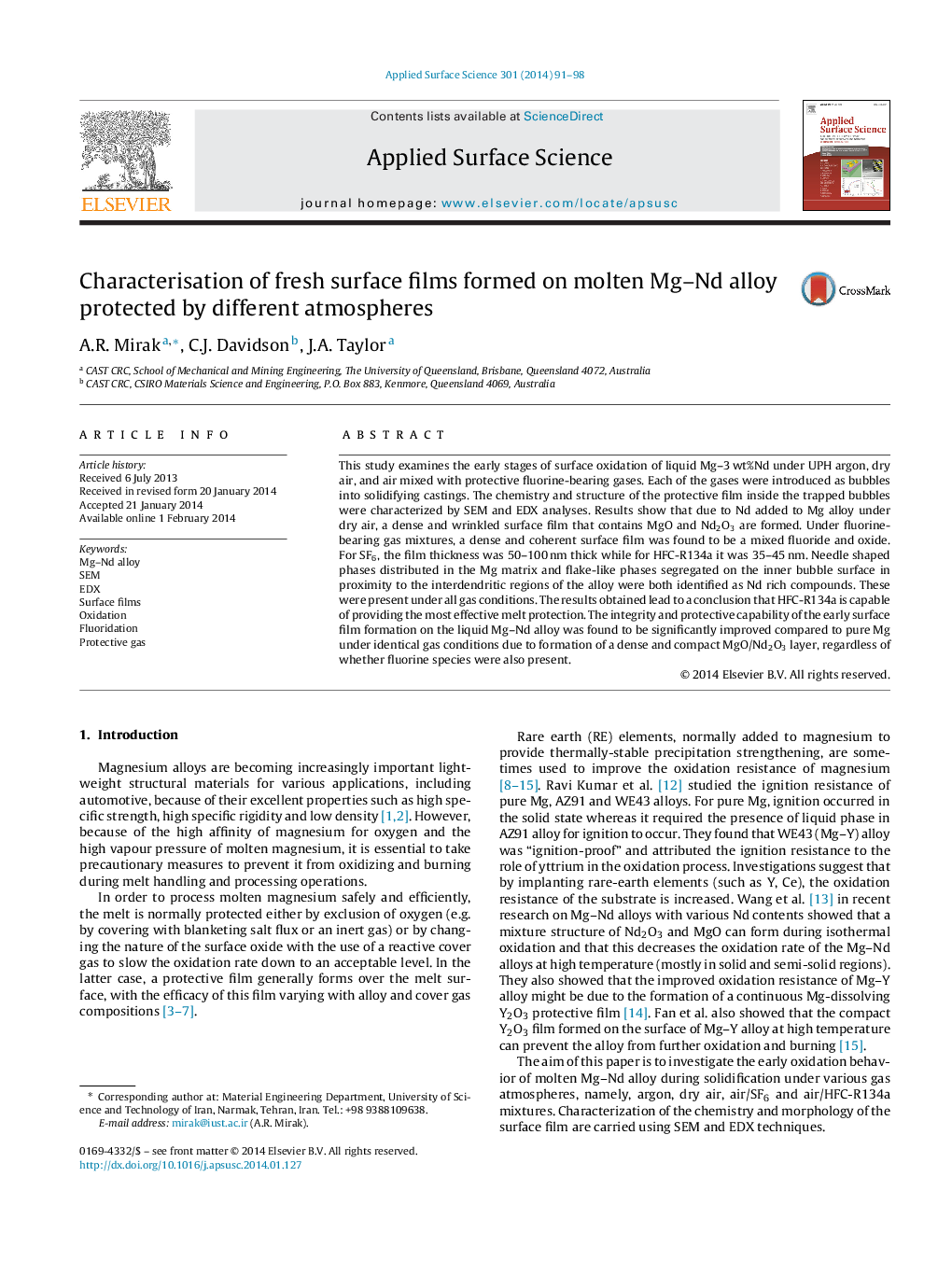| Article ID | Journal | Published Year | Pages | File Type |
|---|---|---|---|---|
| 5350813 | Applied Surface Science | 2014 | 8 Pages |
Abstract
This study examines the early stages of surface oxidation of liquid Mg-3Â wt%Nd under UPH argon, dry air, and air mixed with protective fluorine-bearing gases. Each of the gases were introduced as bubbles into solidifying castings. The chemistry and structure of the protective film inside the trapped bubbles were characterized by SEM and EDX analyses. Results show that due to Nd added to Mg alloy under dry air, a dense and wrinkled surface film that contains MgO and Nd2O3 are formed. Under fluorine-bearing gas mixtures, a dense and coherent surface film was found to be a mixed fluoride and oxide. For SF6, the film thickness was 50-100Â nm thick while for HFC-R134a it was 35-45Â nm. Needle shaped phases distributed in the Mg matrix and flake-like phases segregated on the inner bubble surface in proximity to the interdendritic regions of the alloy were both identified as Nd rich compounds. These were present under all gas conditions. The results obtained lead to a conclusion that HFC-R134a is capable of providing the most effective melt protection. The integrity and protective capability of the early surface film formation on the liquid Mg-Nd alloy was found to be significantly improved compared to pure Mg under identical gas conditions due to formation of a dense and compact MgO/Nd2O3 layer, regardless of whether fluorine species were also present.
Related Topics
Physical Sciences and Engineering
Chemistry
Physical and Theoretical Chemistry
Authors
A.R. Mirak, C.J. Davidson, J.A. Taylor,
